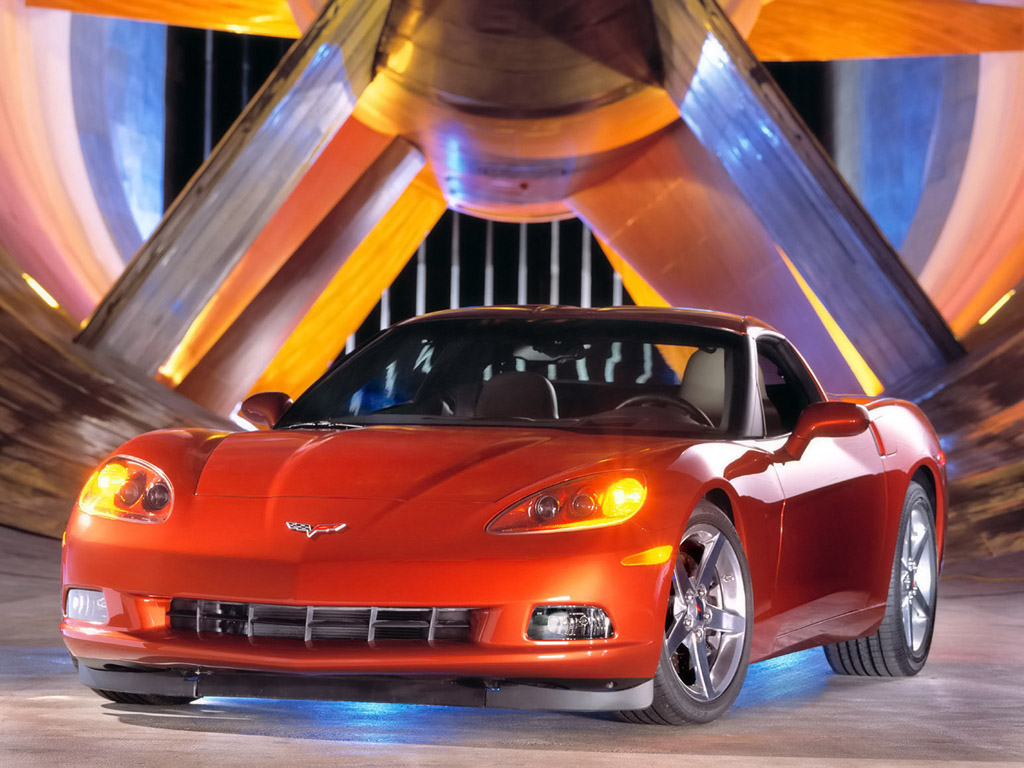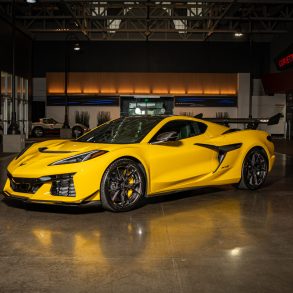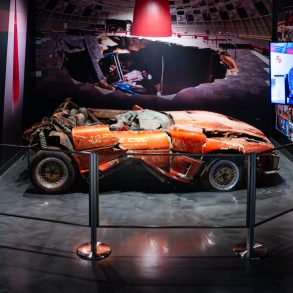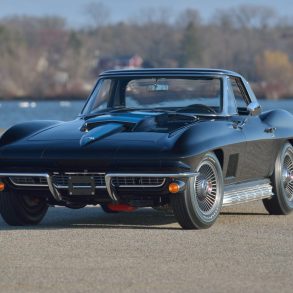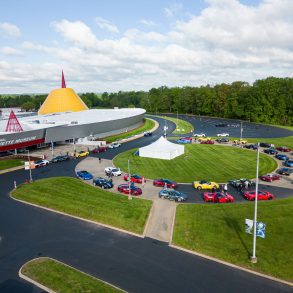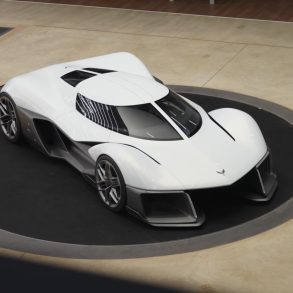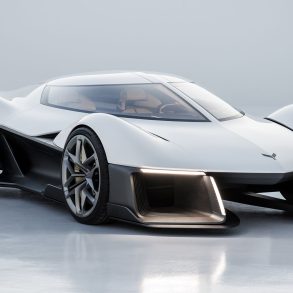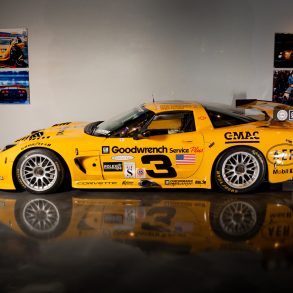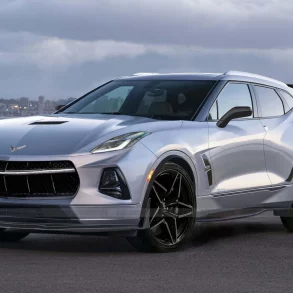Since its inception in 2010, Corvsport.com has always strived to provide its readers with the most in-depth knowledge of the Corvette in all its iterations. We’ve strived to be the “ultimate database” for America’s Sports Car, and we work tirelessly to bring you new information about every model year – from 1953 to current day.
As with any historical database, very little of the information contained herein emerged from our own imaginations. Instead, we do our best to disseminate fact from fiction and provide accurate, historical accounts of the Corvette based on the best information available to us at the time.
In the latest edition of “America’s Sports Car,” the National Corvette Museum’s official magazine, Tom Peters penned an article chronicling his work on the sixth-generation Corvette. In it he recounted the development of the C6 from his own perspective and provided some incredible anecdoates about the car and the people responsible for its creation.
The following article you are about to read evolved from “Rise Of a New Generation: A Behind-the-Scenes Look at Developing the C6,” by Tom Peters. We want to thank Tom, the National Corvette Museum, and General Motors for giving us this incredible perspective and allowing us a closer look at one of the sixth-generation Corvette.
Rise of the Sixth-Generation Corvette
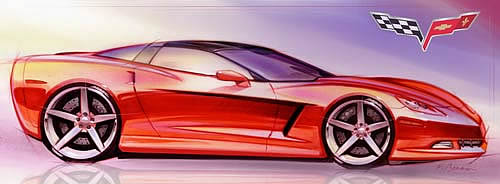
Although Tom Peters had already been at General Motors for more than twenty years by the time he began work on the sixth-generation Corvette, the C6 was the first Corvette for which he was assigned full design responsibility as a Chief Designer. It was also the first time that the Chief Designer had a dual reporting structure: to the Design Leadership as well as the Vehicle-Line Executive – Chief Engineer Dave Hill.
The sixth-generation Corvette saw a lot of other “firsts” as well (in terms of departures from the conventional way Corvettes had been designed/developed in Detroit. One of the first significant proposals presented by Dave Hill and Tom Peters was the decision to bring back “fixed headlamps” on the Corvette – a feature that had been absent since 1963, when Bill Mitchell introduced teh second-generation Sting Ray to the world.
Considered almost sacrilegious at the time, this decision proved to be the right one for Corvette, as evidenced by the continuation of fixed headlamps throughout the entirety of the sixth- and seventh-generation Corvettes, as well as their continuation on the eighth-generation, mid-engine models.
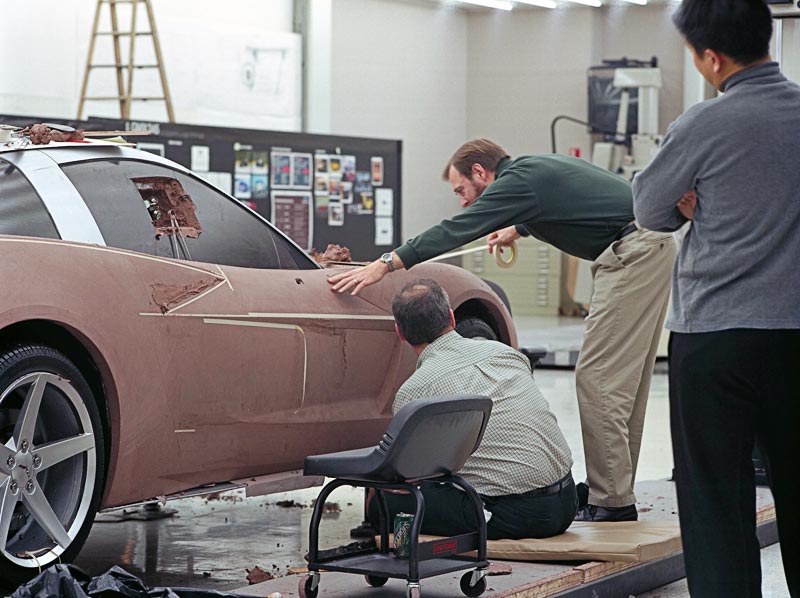
Another significant departure was the relocation of the Corvette design program outside of the Design Building to the Design Annex, a facility that was located remotely on the General Motors Warren Tech Center Campus. This decision was made to enable the sixth-generation Corvette design team the opportunity to work without the constant interruptions they’d have encounted working at design and to have a secure space where they could work in secrecy (essentially) to develop the newest Corvette away from potentially prying eyes. GM wanted the C6 Corvette to “expand its presence around the world as an American sports car with global savvy,” explains Peters.
As a first step to better understanding what a “world class” Corvette needed to be, the GM program marketing team set up a driving event in Frankfurt, Germany (and surrounding areas) that enabled Tom Peters, along with his team of designers, to experience a variety of different environments while driving (then) current fifth-generation Corvettes as well as a Porsche 911: “From winding roads coursing through the dark viridian countryside and small villages nestled in the foothills to buried speedo racketeering on the Autobahn,” Peters comments, “I felt like James Bond.”
During this time, Peters noted that the 911 was better suited for narrow streets and more urban environments while the C5 Corvette provided a more planted driving experience, especially in high-speed environments like the Autobahn. Where the 911 “felt light, twitchy, and strained at high speeds,” the C5 Corvette “was planted, predictable with power for whatever Panzer encountered.”
It also sounded incredible.
Between these experiences and the knowledge gleaned over the past several years from the C5-R Corvette Racing program, it became apparent to Tom that the next-generation Corvette would need to be more efficient, with improved power, performance, and technology. It would also require a smart, beautiful design.
Exposed Headlamps
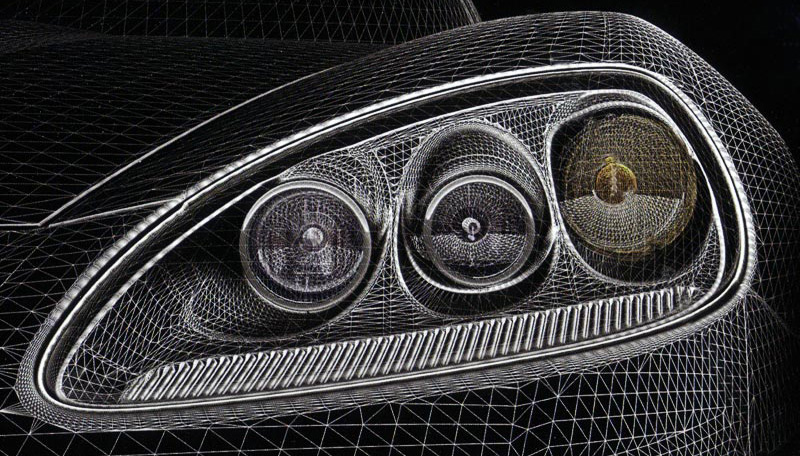
It has long been said that the sixth-generation Corvette wasn’t a new design, so much as it was an evolutionary advancement of teh fifth-generation Corvette’s overall aesthetic. There is little doubt that this statement is true, especially when a fifth-generation and sixth-generation Corvette happen to be parked side-by-side, save for a few notable differences….the biggest of which is, undoubtedly, the exposed headlamp assemblies.
Dave Hill had been impressed with the evolution of projector lamp technology. Though commonplace today, the early 2000’s saw the advancement fo this technology as a viable upgrade to the then-current halogen headlamps which had become an industry standard on many automobiles. Per Tom’s article, it was Dave Hill who first saw the introduction of projector headlamps as a “signficant upgrade” for the C6.
“As part of his proposal to me as Design Chief,” Peter explains, “(Dave Hill) suggested that projectors should be lighter, and have a precision fit which would enable lower-profile fender packaging as well as excellent quality, and the best lighting performance in the world of which we would have exclusivity.”
Although Tom acknowledged some initial reservation based on past tradition, he also conceded that he was an “open-minded and optimistic guy” who was “not inclined to say no to anything initially.” Futher, upon greater consideration of the exposed projector headlamp proposal, Peters also returned to the traditions established by Corvette – includling those traditions introduced on the first-generation Corvettes, and on many of the concept cars and race cars that had been showcased over the past half-century – all of which had exposed headlamps.
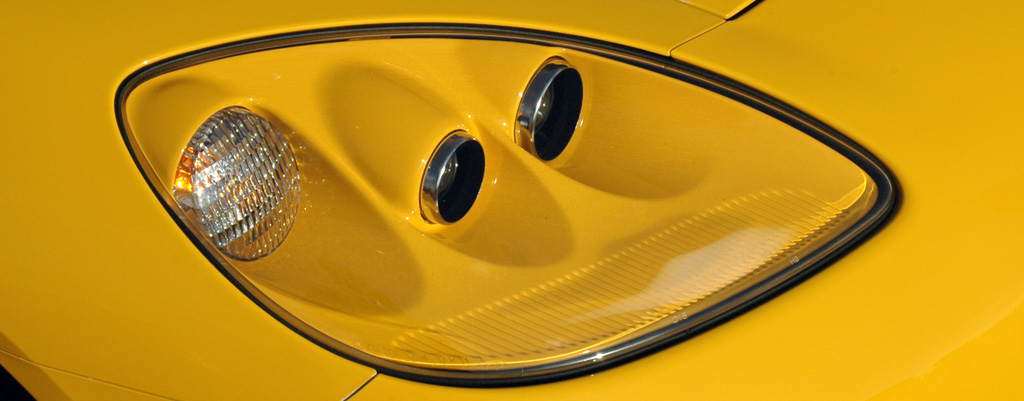
Armed with this realization, and after garnering the added support of Jerry Palmer, GM’s Executive Director of Design, Peters ventured forward with the idea of bringing exposed headlamps back to Corvette.
The procress began the next morning when Peters met with Assistant Design Chief Kirk Bennion and the clay sculpting team responsible for development of the sixth-generation Corvette full-scale clay mockups (which were already in production at that time). He had brought his collection of Canon camera lenses into the Design Annex where the clay model resided. Working with Bennion and the clay modeling team, Peters carved out cavities on the full-scale model and installed the lenses into these headlamp cavities to get an idea of what exposed “projector headlamp lenses” would look like on the sixth-generation Corvette.
Once completed, the team stepped away from the clay model and had it moved to a secure, outdoor viewing area at the Design Annex known as “the Patio.” “Viewing a full-size vehicle on the Patio is, in my opinion, the most important tool at GM Design. I would tell colleagues and young designers ‘Do you know what is out there on the Patio? THE TRUTH!'”
And the truth was revealed. Despite the rising controversy from internal skeptics at GM who denounced the team’s decision to move to exposed headlamps on the C6, the entire theme of the clay model shouted CORVETTE. The decision was made to move forward with the design and to keep the headlamps exposed, even though a certain amount of backlash was expected from consumers and enthusiasts when the new model was introduced.
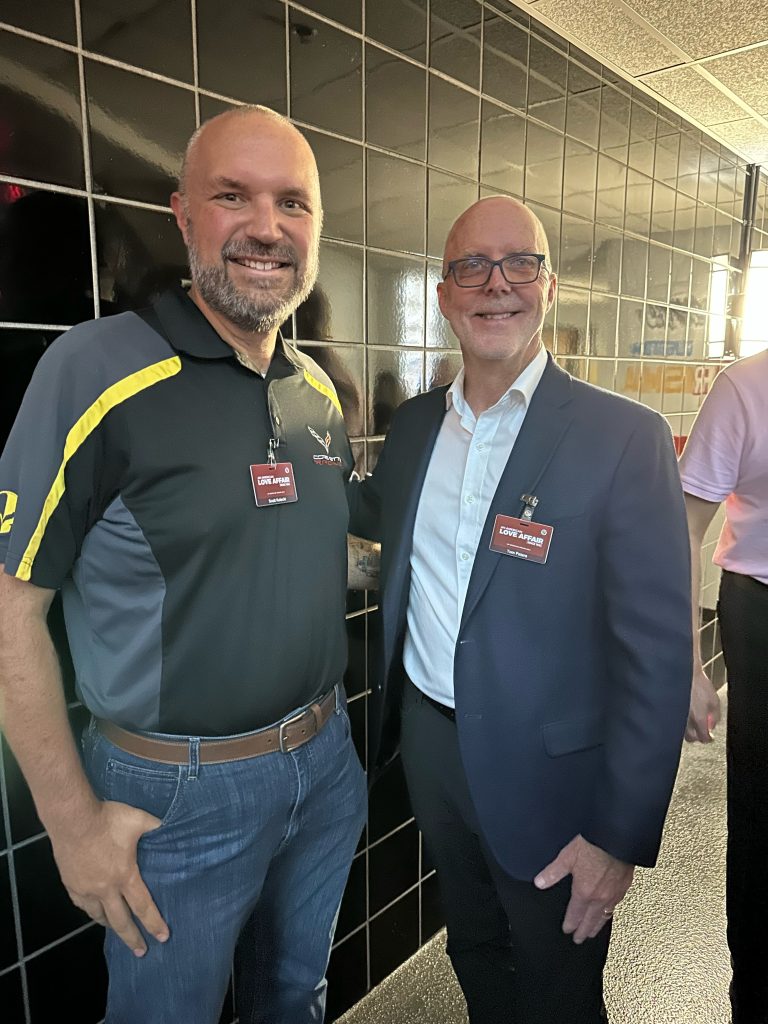
Recently, I was at the private opening of the “Corvette Love Affair” exhibit at the National Corvette Museum, and I had the opportunity to meet Mr. Peters. We talked for several minutes and he shared some of the outward critisicm and outrage that was projected at him for electing to move forward with the exposed headlamps on the C6. He also discussed it in his ASC article. “The most outrage seemed to come from many loyal traditional customers and enthusiasts. Hate mail flooded in, with the unkindest words. At presentations, I would even get the occassional ‘I would like to sock you right in the nose’ comment. As unpleasant as it sounds, it also influenced my inspiration to shake up the C7 tail lamps. Heaven forbids!”
Corvette For the Next Generation
As has been said of the mid-engine C8 Stingray, one of the design team’s key goals on the C6 was to “strech the customer spectrum towards a younger audience.” Marketing statistics showed that, up to that point in time, Corvette sales had been primarily comprised of buyers over 50 years of age. Marketing research demonstrated that the folding headlamps synonymous with the C2-C5 Corvette in all their iterations harkened back to a lower-tech / classic era of automotive design. Many of the cars being purchased by younger consumers, including many import models, featured uniquely designed exposed headlamps as an integrated feature of the car’s front end styling. The C6 now represented the same. To the younger audience, the decision that had been made to go with exposed headlamps on the C6 was a step in the right direction (in terms of more contemporary, relevant styling.)
As has been proved over time, even the most cynical critics eventually accepted – even embraced – the exposed headlamp feature on the Corvette, which has now been a prominent feature of the Corvette since 2005. While the headlamp styling on the C6 has most definitely evolved, there is a legacy inherent in the design that has been carried forward into the C7 and C8 headlamp assemblies. Each new model, which now includes the 2023 Z06 and 2024 ERay models, continues to advance that design architecture.
As for the rest of the C6 design? The car was a bold statement of design that advanced many of the styling aesthetics that were great about the C5 (1997-2004) into a car that was more definied and refined. While the argument has been made that the C5 Z06 remains one of the most track-capable Corvettes of all time, this statement must also be tempered with the understanding that it the most capable at its price-point. The C6 certainly advanced that architecture and gave consumers a car that was intended for both the open road and the race track. With the evolution of the Grand Sport, Z06 and even ZR1 models, the C6 transcended anything that came before it and truly began to blur the lines between street car and race car. This same evolution has continued since that time with the C7 and C8 models (in all their variants), sharing parts and technologies developed in cooperation with the Corvette Racing program….but it was the engineers and designers, including Tom Peters, who ushered in this era of genuine, track-capable, high-performance Corvettes. And I, for one, am forever grateful for the decisions he (and his team) made in terms of styling on these incredible cars.


